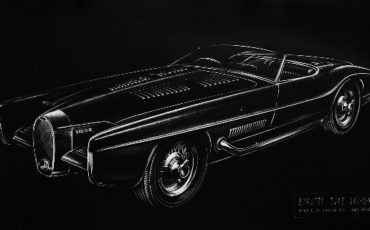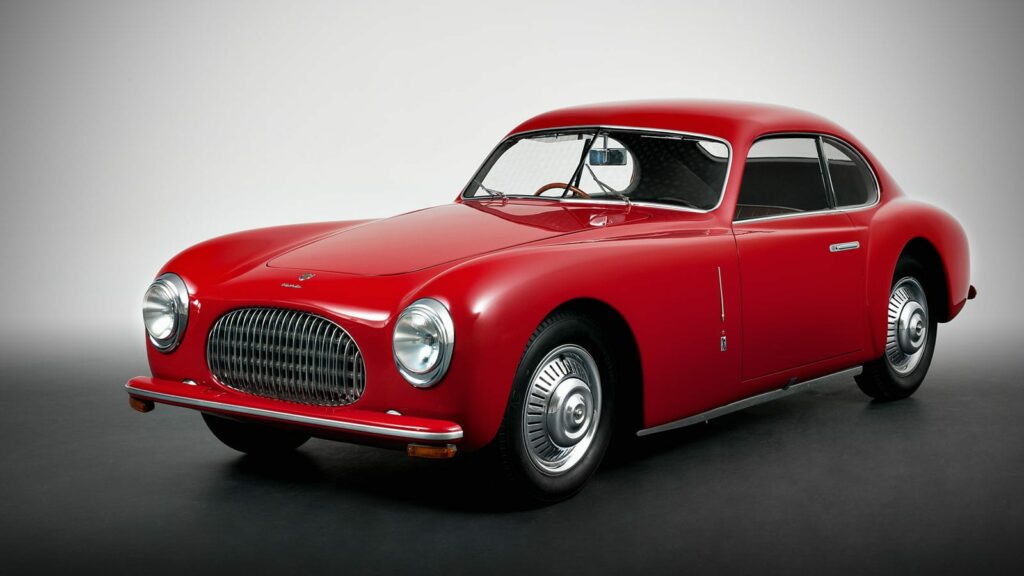
The Cisitalia 202 is important to automotive history both because it was the first car in the world to be permanently exhibited in a modern art museum, the MoMA in New York, and because it can be considered the first example of the postwar Italian-style granturismo.
The origin
Toward the end of World War II, industrialist, sportsman and semi-professional driver Piero Dusio from Turin founded Compagnia Industriale Sportiva Italia, in short Cisitalia, to build racing and granturismo road cars. After the success of the first car equipped with a tubular chassis and Fiat 1100 components, the single-seater D46 made in several speciments, Dusio decided to build a two-seater for Sport racing, the 202 S MM or Spyder Nuvolari, and a road car, the future 202 Coupé.
The Cisitalia team, consisting of five cars, two experimental berlinettas and and three 202 S MM spiders, took second, third and fourth place in June at the 1947 Mille Miglia, with Tazio Nuvolari second who remained at the wheel of the race for long stretches until he was slowed down by a violent thunderstorm in the last section.
The car
Starting with Nuvolari’s 202 S MM, the new Cisitalia 202 Gran Sport is built, which takes its tubular chassis and inline 4-cylinder engine, derived from that of the Fiat 1100 and elaborated to develop 55 hp. The new 202 is previewed to the public on the eve of the 1947 Italian Grand Prix, the first Grand Prix organized in Italy after the war, run on a city circuit built in the Portello district of Milan instead of at Monza as usual. Cisitalia, which participated with D46s, presented in that context not only its first granturismo but also and above all the first real automotive novelty of the postwar period. In fact, the other major Italian brands for reasons of cost and necessity simply retouched pre-war models whose production was interrupted by the war in 1940.
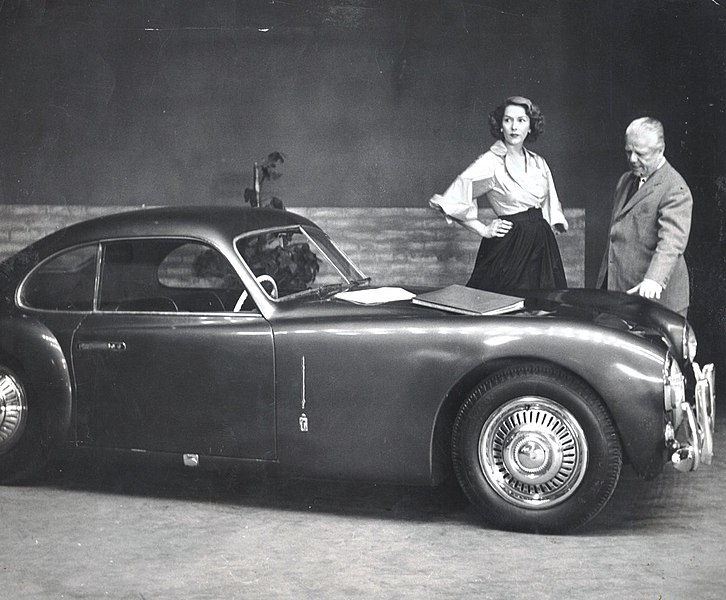
After its preview at the Grand Prix d’Italia, the Cisitalia 202 is officially presented to the international public at the Paris Motor Show on October 23 in two versions, Sport and Sport Special, with power outputs of 50 and 60 hp, respectively. Immediately these set-ups are unified into the single 55-hp Gran Sport version, which, thanks also to its weight of only 780 kg, reaches 165 km/h and is sold at 3,900,000 lire, an exorbitant price for the time.
The tubular chrome molybdenum steel chassis, derived directly from the aircraft industry, is one of the great innovations of the 202 because until then it had never been used on a road car. Until then, even sports cars used a spar frame on which they mounted hand-made sports bodies. For this car, Cisitalia project manager Giovanni Savonuzzi, with the invaluable collaboration of Dante Giacosa on loan from Fiat, decided to use the tubular chassis because it was lighter and stiffer, at the same weight, than the classic chassis with side members and cross-members and allowed the engine to be mounted lower, improving the car’s handling. The rest of the mechanicals are derived from Fiat parts, as on the single-seater D46.
The engine is a 1089 cm³ inline 4-cylinder (bore x stroke: 68 x 75 mm) derived from that of the Fiat 1100 but deeply tuned to develop 55 hp at 5500 rpm, so much so that only the cast iron cylinder block remains original. The aluminum cylinder head is completely new although it retains the overhead valve timing system, two per cylinder, with pushrod and rocker arm control, and single camshaft in the crankcase driven by gears. The exhaust and intake manifolds are also specific, as are the crankshaft, made from billet steel, connecting rods, pistons, and dry-sump lubrication system. The rear axle, with longitudinal leaf springs and friction dampers, and the 4-speed manual gearbox, with floor lever as standard, or steering wheel control, on request, come from the Fiat 1100, while the front suspension, with independent wheels and transverse leaf spring, and the steering, which is very hard to operate in maneuvering, come from the 500 “Topolino.” The wheels are spoked but covered with handcrafted aerodynamic “cups” that worsen the efficiency of the brakes, obviously drum brakes.
The design
The new 202 SC is a sensational coupe, combining the first-class technical content of the D46 and 202 S MMs with a modern bodywork created by Pinin Farina that sets the standards for future Italian granturismo, while maintaining a link to the best prewar achievements. Like all masterpieces, however, it did not have a single “father,” in addition to Giovanni Savonuzzi, and Battista “Pinin” Farina, who made most of the examples, mention should also be made of Alfredo Vignale, then head coachbuilder at Stabilimenti Farina, and later an imaginative independent coachbuilder.
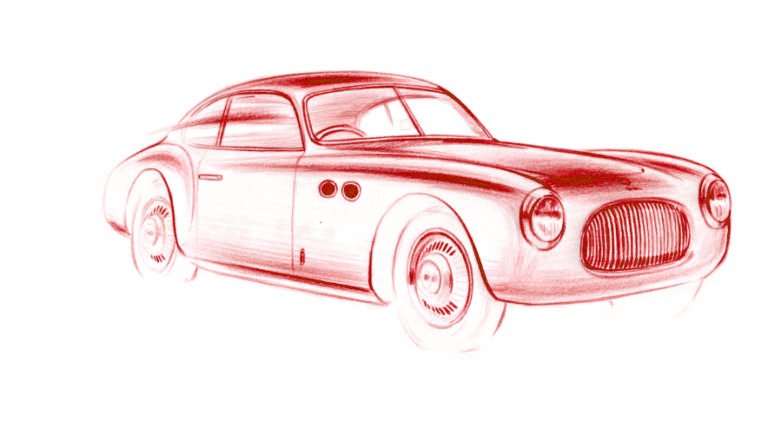
The 202 is a hatchback sedan; the front end is very simple, with an oval opening for cooling covered by a grille formed by 23 convex vertical aluminum slats, and circular headlights placed on top of the fenders and surrounded by a chrome surround. The bumper is a thin strip of body-color metal with no rostrums. The profile, while following the “Ponton” style, maintains a link to pre-war bodies with separate fenders, highlighting the front ones by lowering the line of the hood, and extending its line to the door, and the rear ones by sculpting the side just behind it. The pavilion connects perfectly with the tail, which is almost truncated, on which are mounted the taillights, the bumper, identical to the front one, and a small hatch concealing the spare tire on which the license plate holder is housed; in fact, there is no trunk lid, accessible instead from inside the passenger compartment. Also, for the first time, the manufacturer’s mark is present on the tail of a car, specifically an italicized Cisitalia inscription in handwriting that replicates that of Corrado Millanta, a well-known automotive journalist.
The interior is simple but nicely finished; the steering wheel is on the left and the gearshift on the floor, but right-hand drive and steering-wheel-mounted gearshifting can be obtained on request at no extra charge. Behind the three-spoke steering wheel with bakelite crown are two large circular instruments, the speedometer/speedometer and tachometer; in the center of the painted dashboard are secondary controls, the ashtray and, on request, the car radio while in front of the passenger seat is a glove box. The floor is fully carpeted, and the two separate seats can be upholstered in leather or fabric, in a choice of colors.
The rolling sculpture
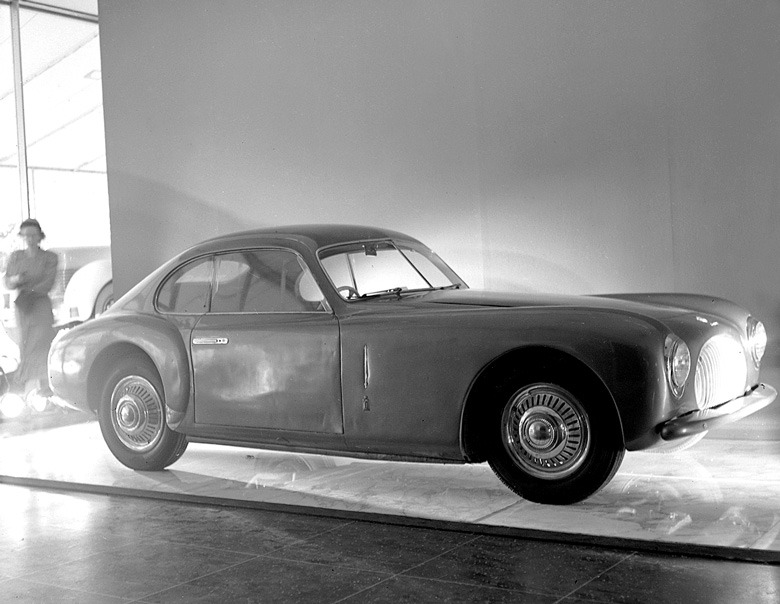
The beauty of this car’s line is certified by the fact that one of the Cisitalia 202s bodied by Pinin Farina was the first car to be included in the permanent collection of a modern art museum. In fact, after being presented at the Milan Triennale and the Villa d’Este Concorso di Eleganza in Cernobbio, a Cisitalia 202 has been on display at the Museum of Modern Art in New York since 1951, described at the time by its director Arthur Drexler as “a sculpture in motion.”
Production
As with other cars built in small series, production did not take place entirely in the Cisitalia factory; the tubular chassis, complete with mechanicals, was built there, while the bodywork in Itallumag, a special aluminum alloy, was entrusted to an outside coachbuilder. In fact, while maintaining a similar design, each example is different from the other because it is made entirely by hand by the specialized artisans of Pininfarina, Stabilimenti Farina, and later also by the newly formed Vignale. Along with the berlinetta, a cabriolet version was also built, sharing the salient features of the line with the coupe except for the manual soft top. The Cisitalia 202 Cabriolet is not to be confused with the 202 SMM or Spyder Nuvolari, which is also an open car but expressly intended for racing.
Over the course of production the design evolved but remained essentially the same. The most significant changes came after the 130 chassis, known as the B version, and are concentrated in the grille, which is simplified by becoming chrome-plated brass; in the windshield, which becomes single and curved from flat and split; in the presence of a new twin-body carburetor, which brings the power to 60 hp; in the hood, hinged at the front instead of opening left and right with a complex and unreliable system of double hinges; and in the trunk, now accessible from the outside thanks to a larger hatch.
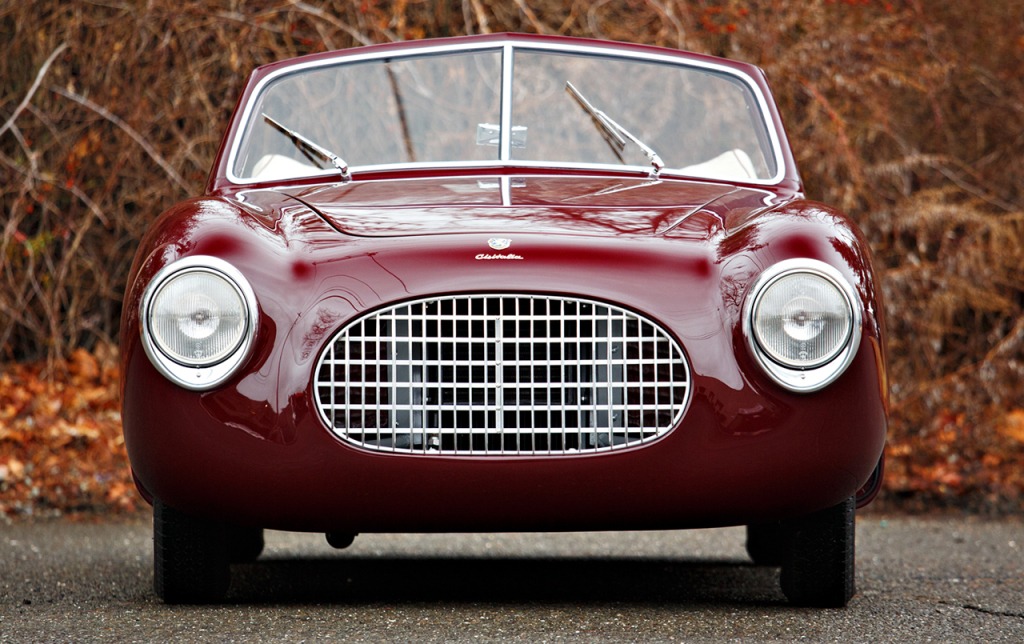
The exact number of speciments made is not certain: reliable sources speak of one hundred coupes/berlinettes and about sixty cabriolets all built by the Turin coachbuilders between 1947 and 1949, when Cisitalia went into receivership, although the last cars were marketed until 1952. That year four or five Cisitalia 202 D were built with BPM (Botta and Puricelli, Milan) 2.8 l 185 hp marine engine and De Dion rear axle from the Lancia Aurelia B20 GT, which Piero Dusio with his son Carlo piloted until their retirement in the 1952 Mille Miglia.
After this experience, the tubular-framed 202s ended, but the brand still survived by first making about fifty cars on the spar frame of the 1100 with an tuned Cisitalia engine, and then by coachbuilding the chassis of the new Fiat 1100/103, giving rise to the 35 and 36 DF Volo Radente, again with elaborate Cisitalia mechanics. From there on, Cisitalia headed for closure in 1964, making a number of special cars based on the Fiat 600.
Cisitalia 202 SC
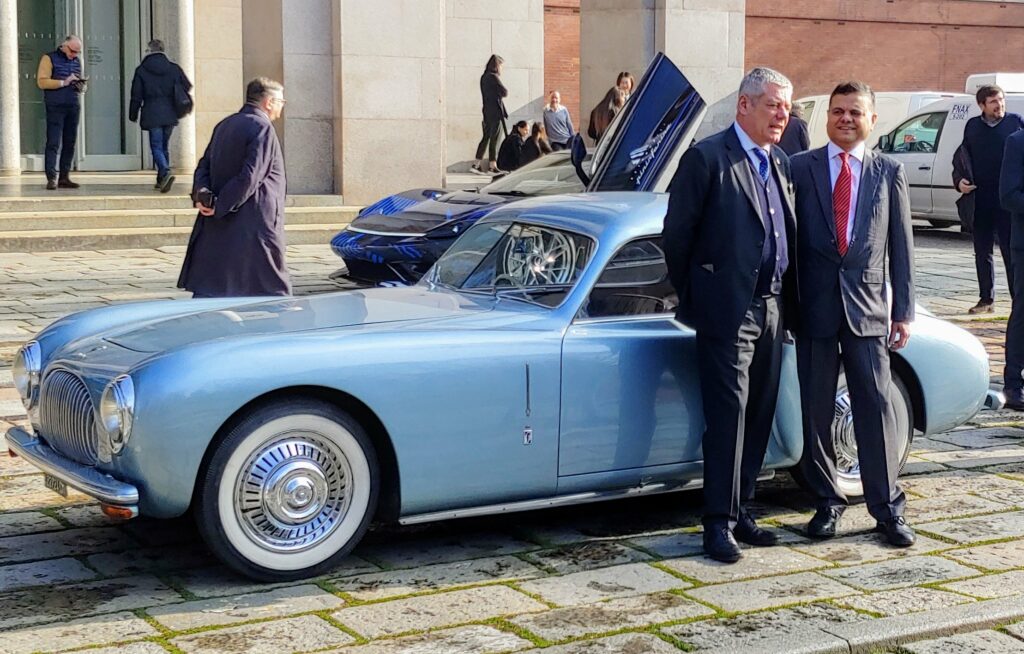
The 202 SC was the first version presented in 1947 at the 1947 Mostra della Carrozzeria, 1947 Villa d’Este Concours d’Elegance and 1947 Paris Motor Show. Equipped with 2 seats, the front grille featured 23 “blades”, had a split windshield and thin bumpers compared to the upcoming versions. It was built both as Coupé and Cabriolet by Pininfarina, Stabilimenti Farina and Vignale. It is exhibited at the MOMA in New York.
Cisitalia 202 B
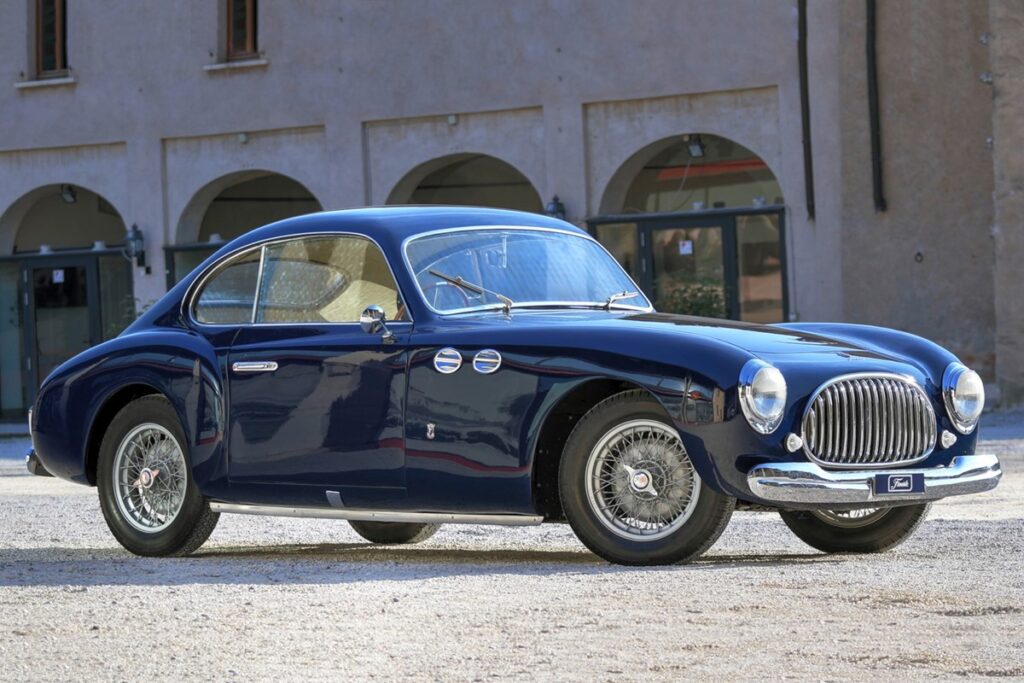
The Cisitalia 202 B was the updated version unveiled in 1949. The upgrades were: a more powerful engine, 4 seats – 3 front and one in back, a curved windscreen instead of the split one and a different front grille. Built both as Coupé and Cabriolet by Stabilimenti Farina and Vignale which exhibited the 2 versions at the 1950 Turin Motor Show.
Cisitalia 202 C
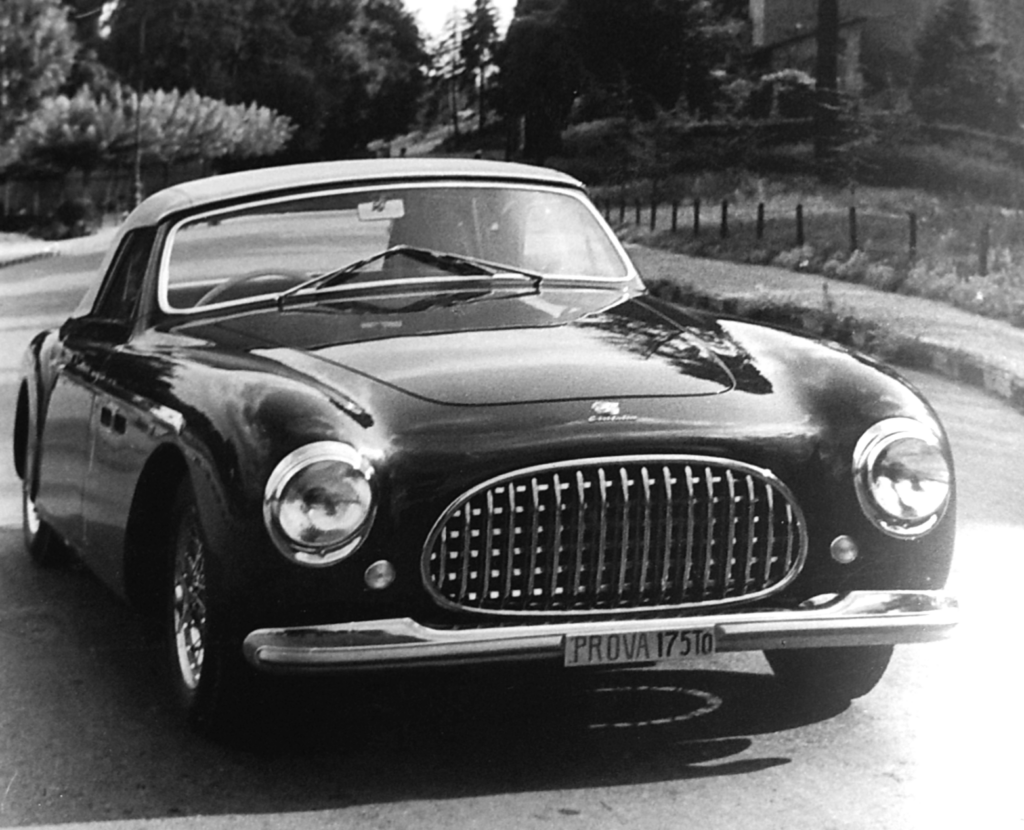
The Cisitalia 202 C was built by Vignale in 1951 as Coupé and Cabriolet. It was a more refined version with retangular-shaped portholes and trunk lid.
Cisitalia 202 D
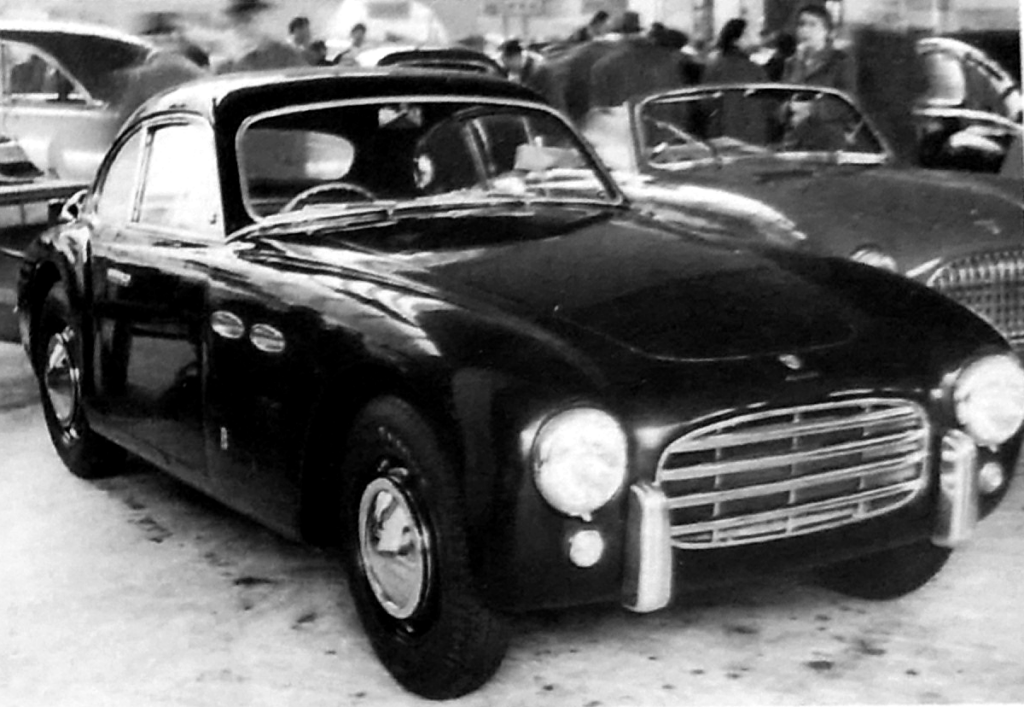
Also called “Competizione”, the 202 D was built both as Coupé and Cabriolet (2 speciments each version). The first Coupé was unveiled by Vignale at the 1952 Geneva Motor Show and was equipped with a 2.8L engine and raced the 1952 Mille Miglia. Also a 2.0L version was built. Stabilimenti Farina was also envolved building the body for a Coupé and a Cabriolet.
Cisitalia 202 L
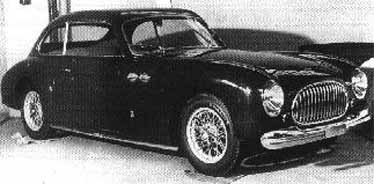
The 202 L was the last version built by Vignale in only 5 speciments with a 20 cm longer wheelbase and space for 5 people.
One-off versions
Despite its limited production run, there were also some one-off’s built on the Cisitalia 202 chassis. Stabilimenti Farina for instance built a “fin-tail” Coupè, while Carrozzeria Castagna showcased its famous “Vistotal Patent” on a Cabriolet body. A spider version was also built by Pietro Frua, but the most breathtaking speciment is definitely the 202 Abarth built by Carrozzeria Allemano and designed by Franco Scaglione.

